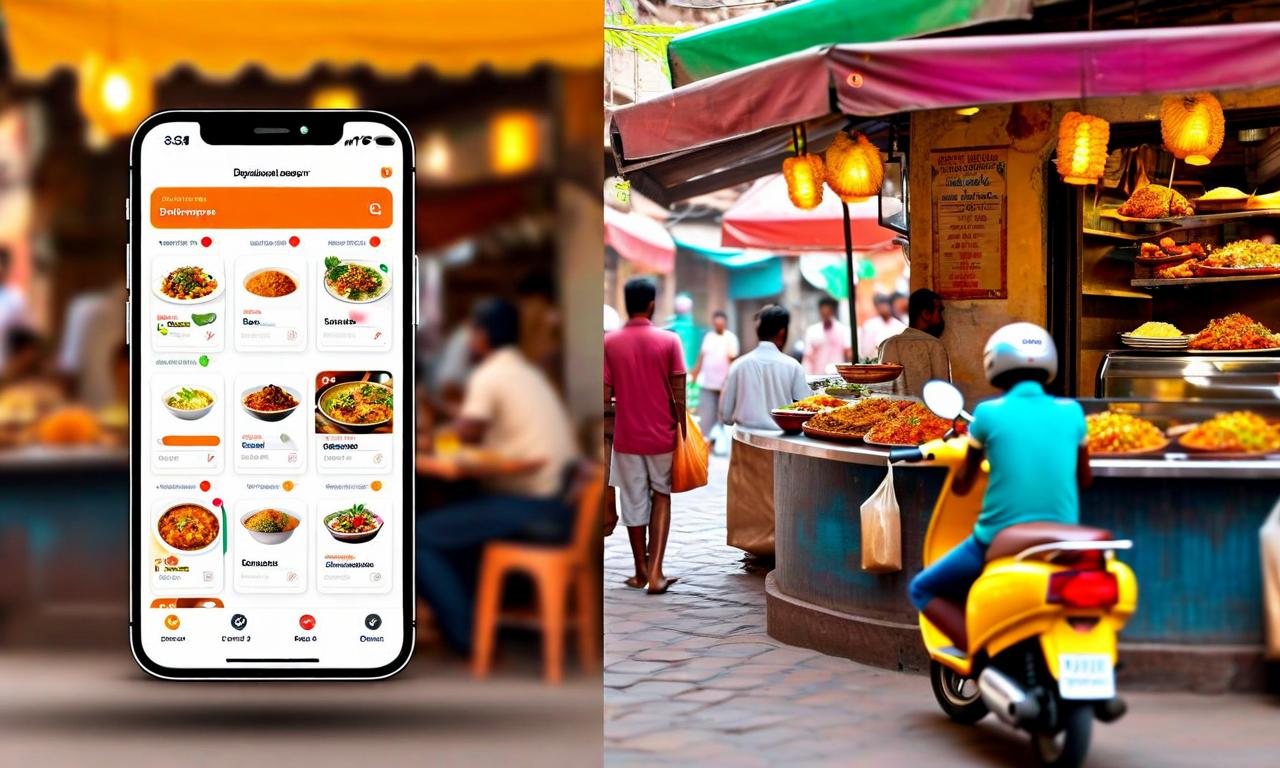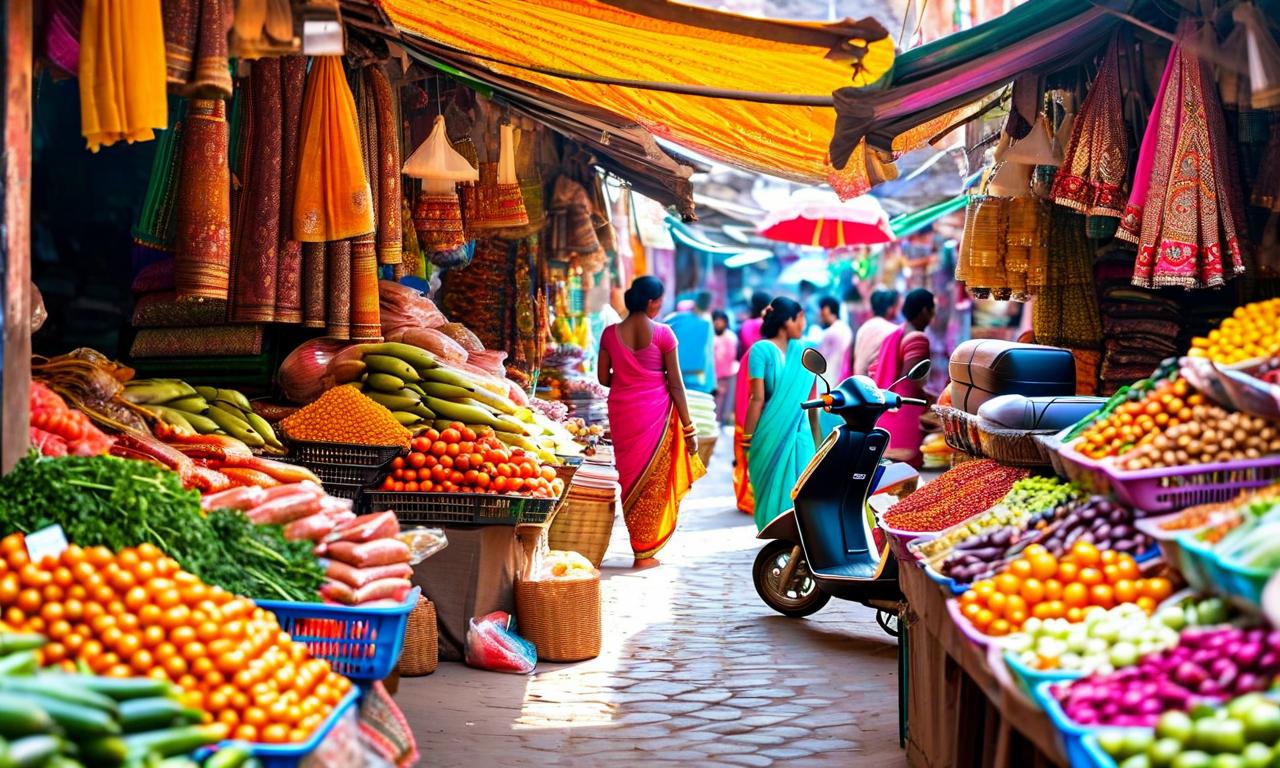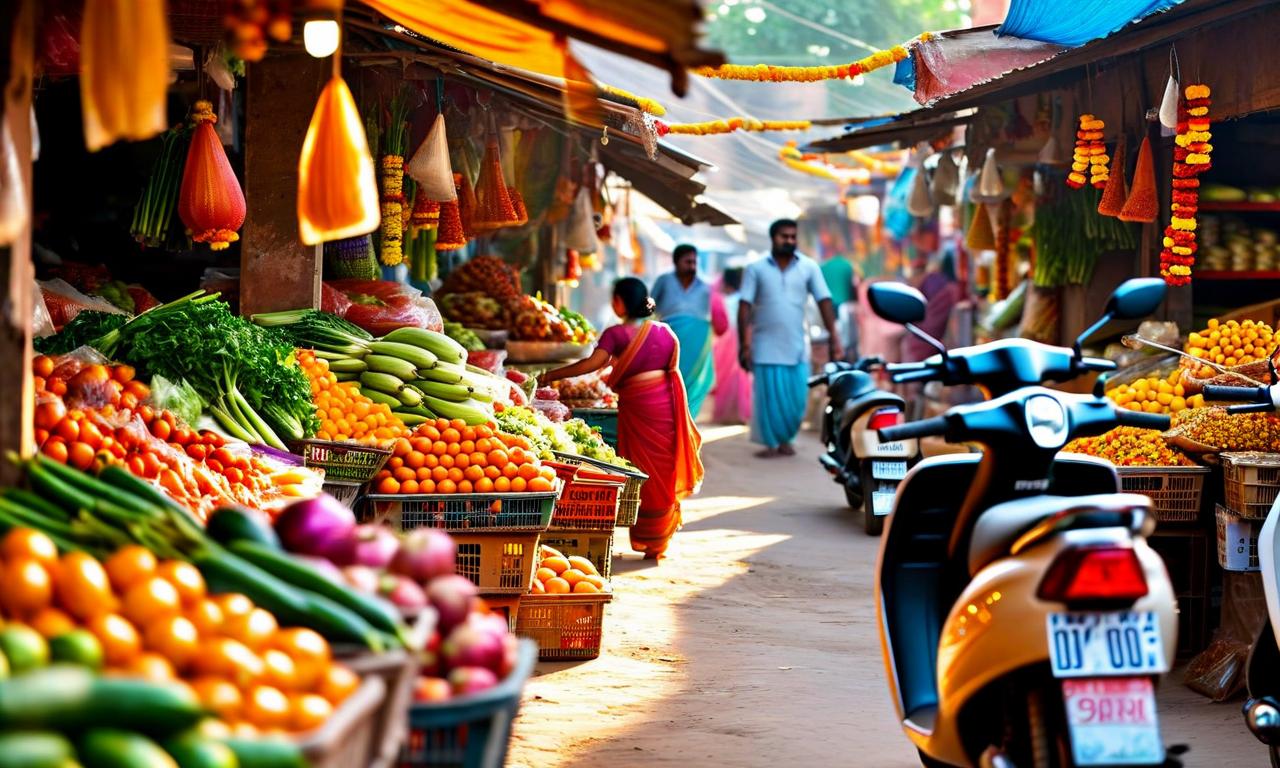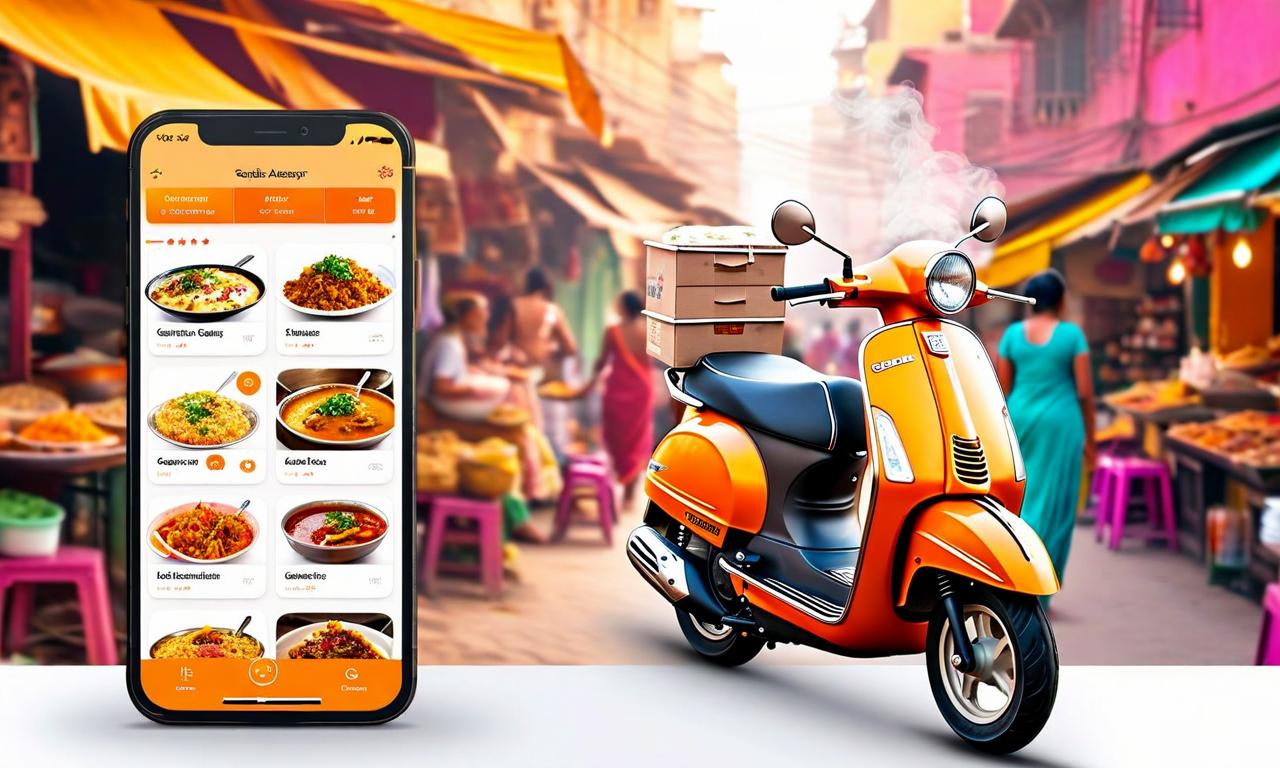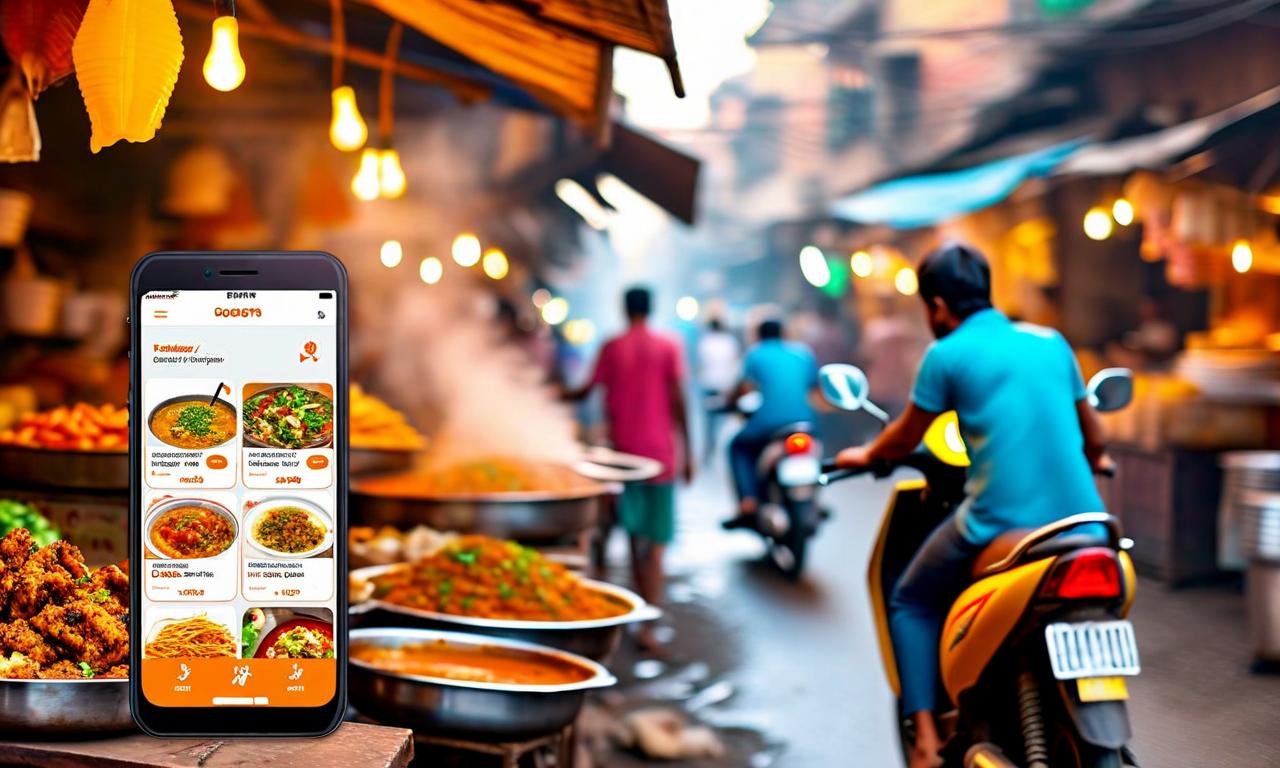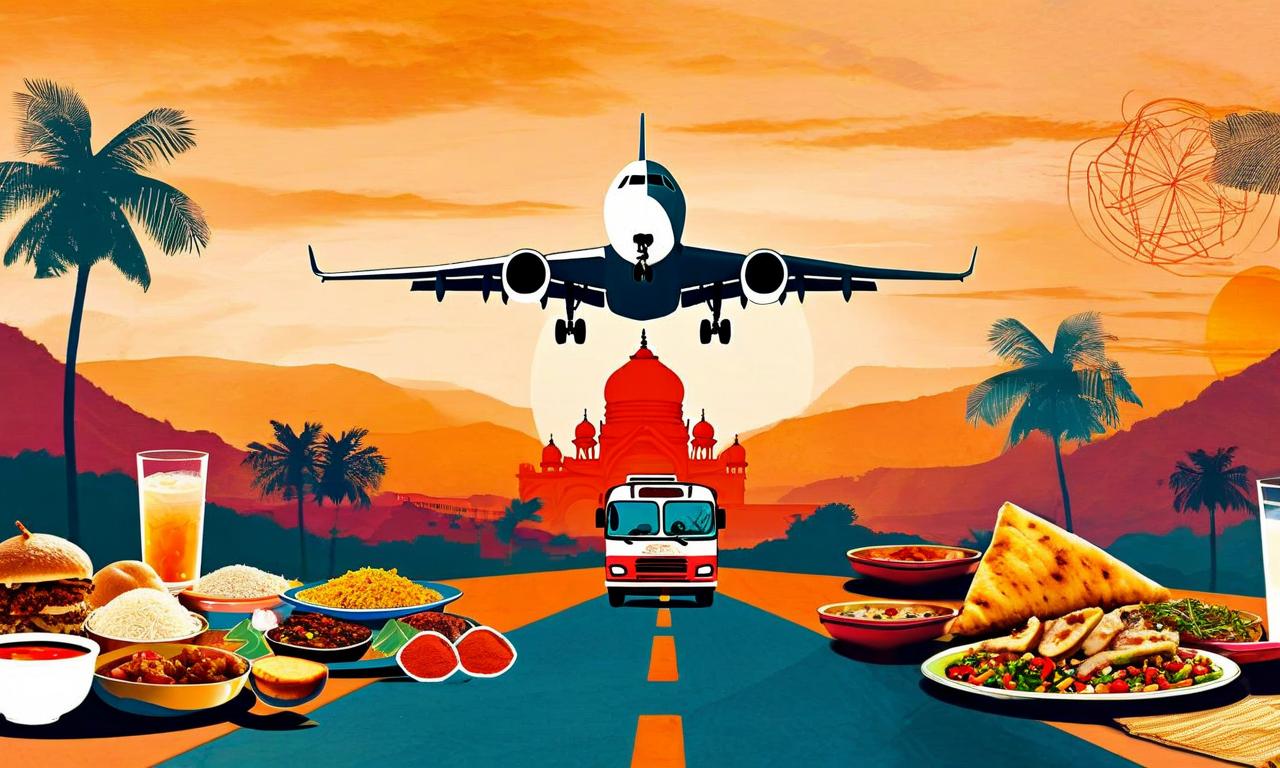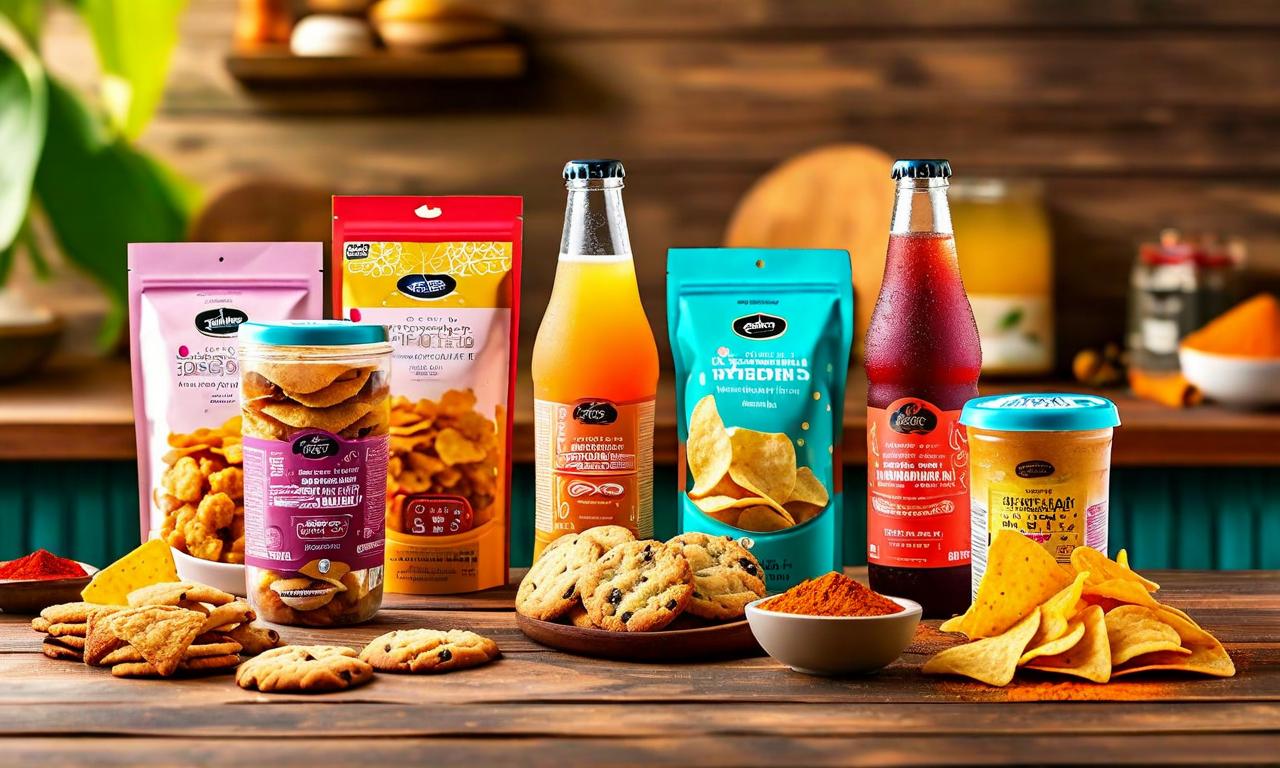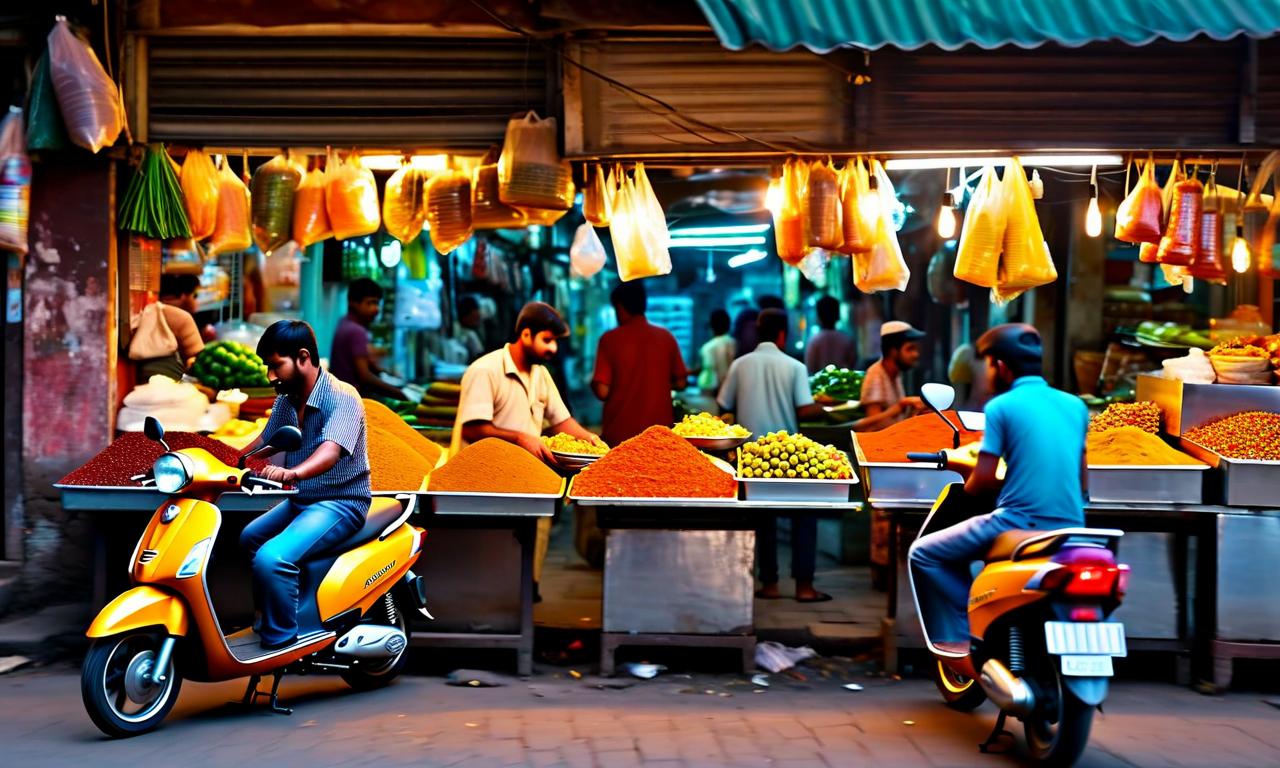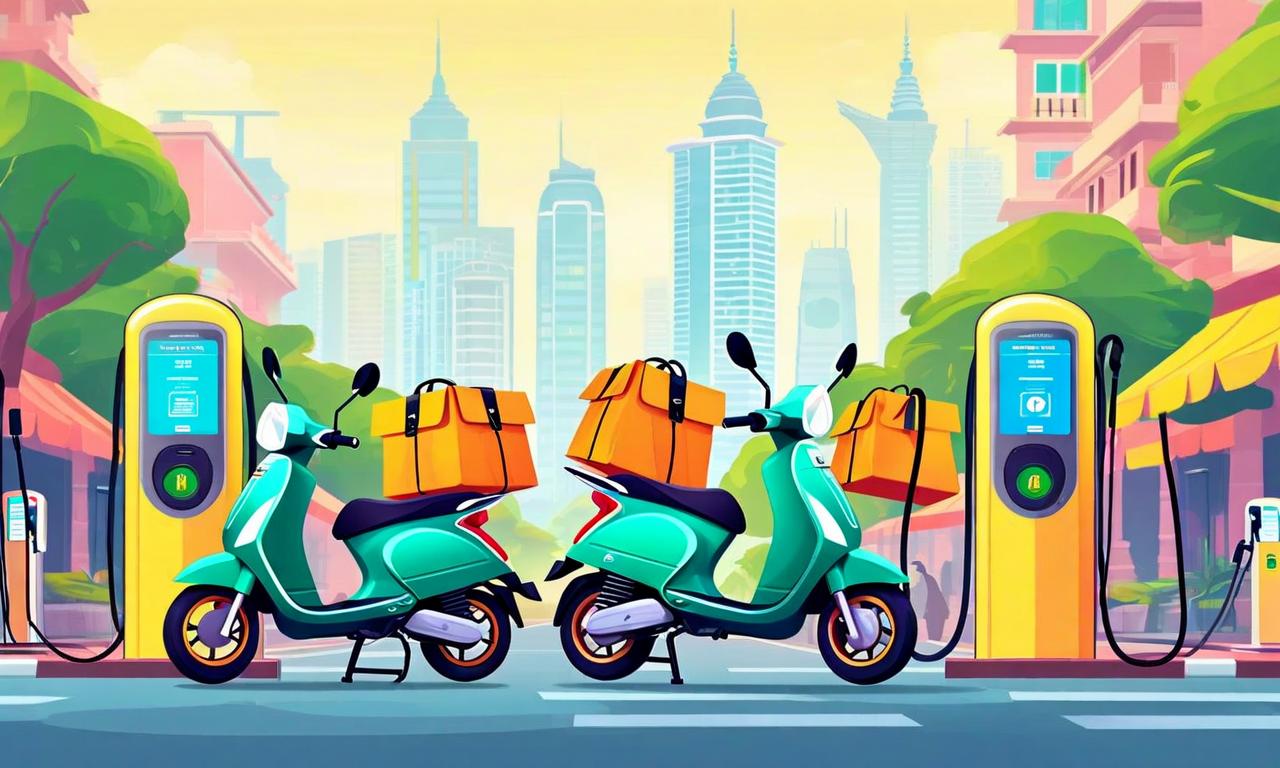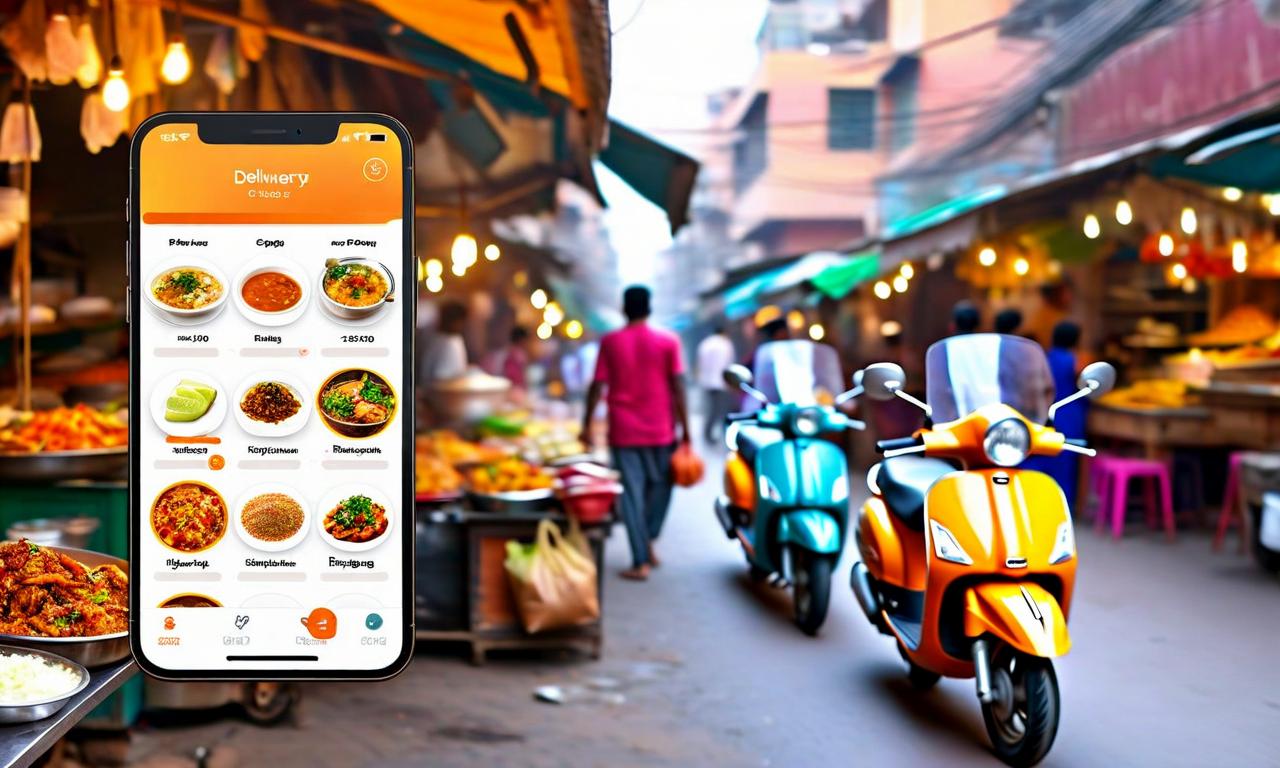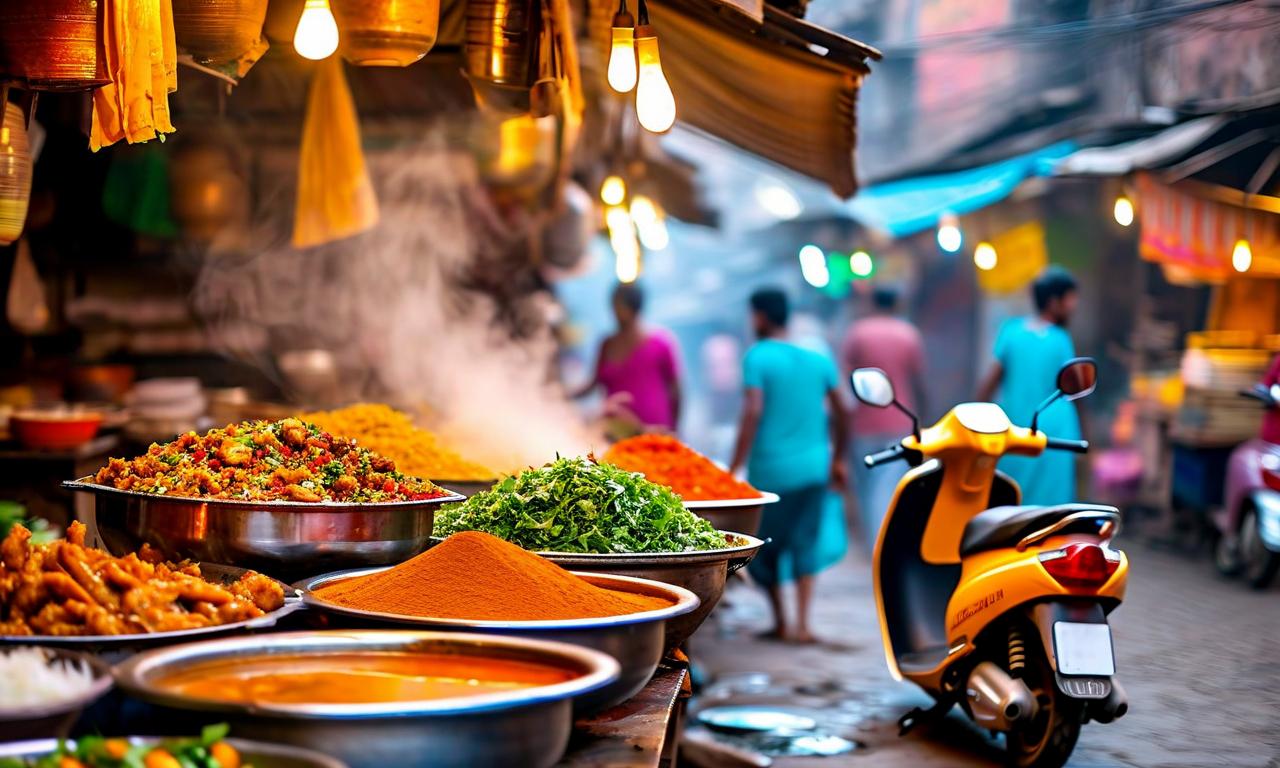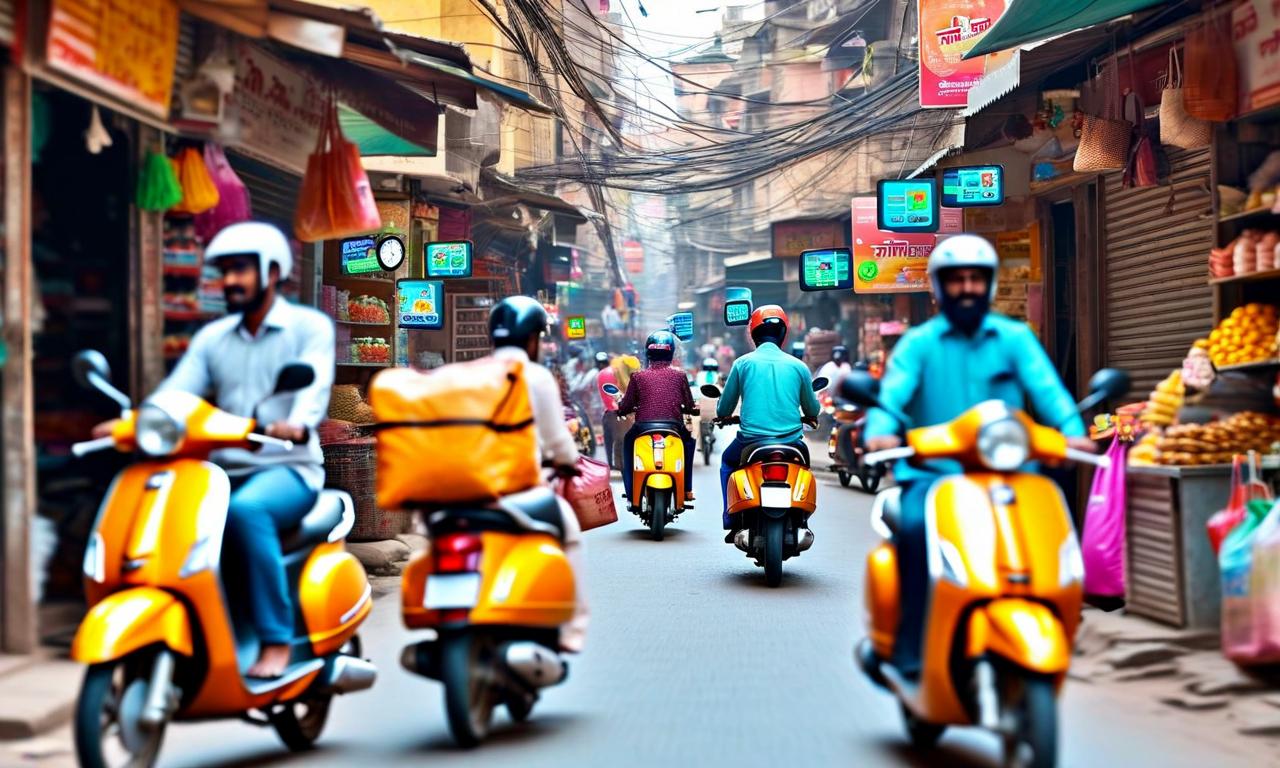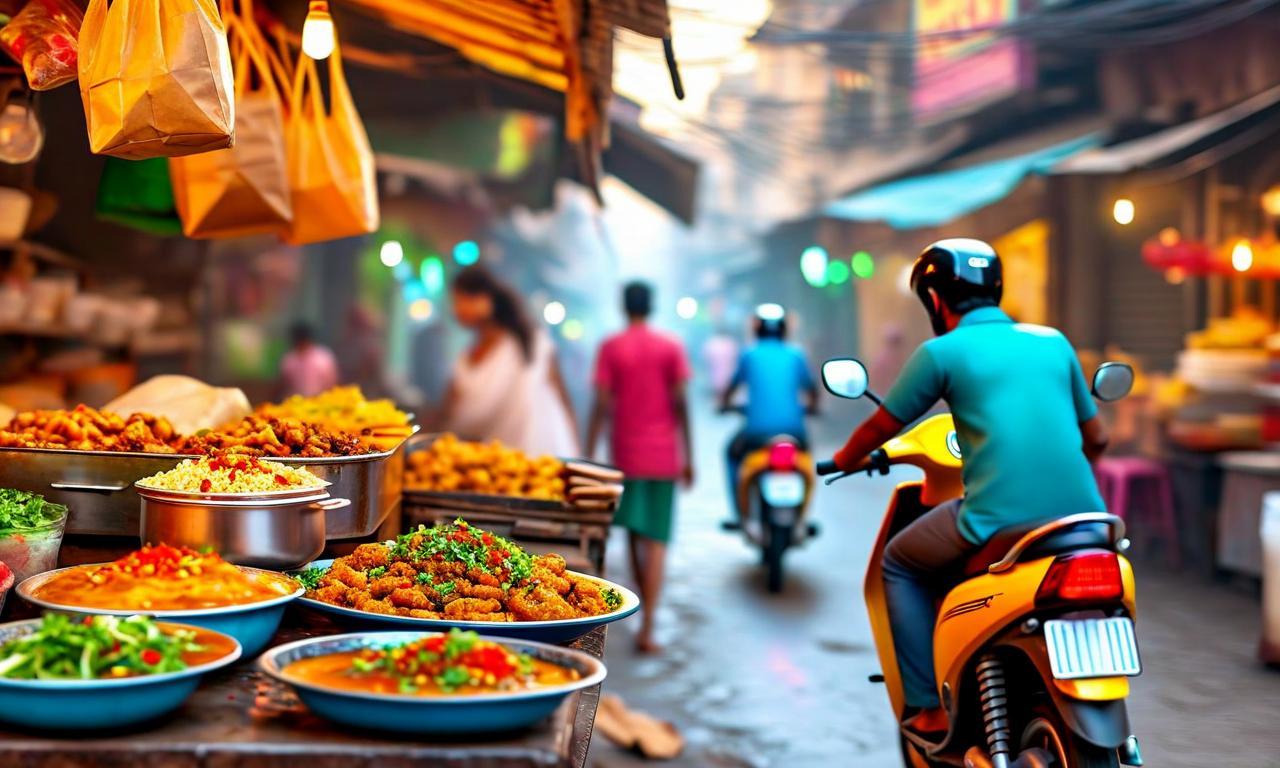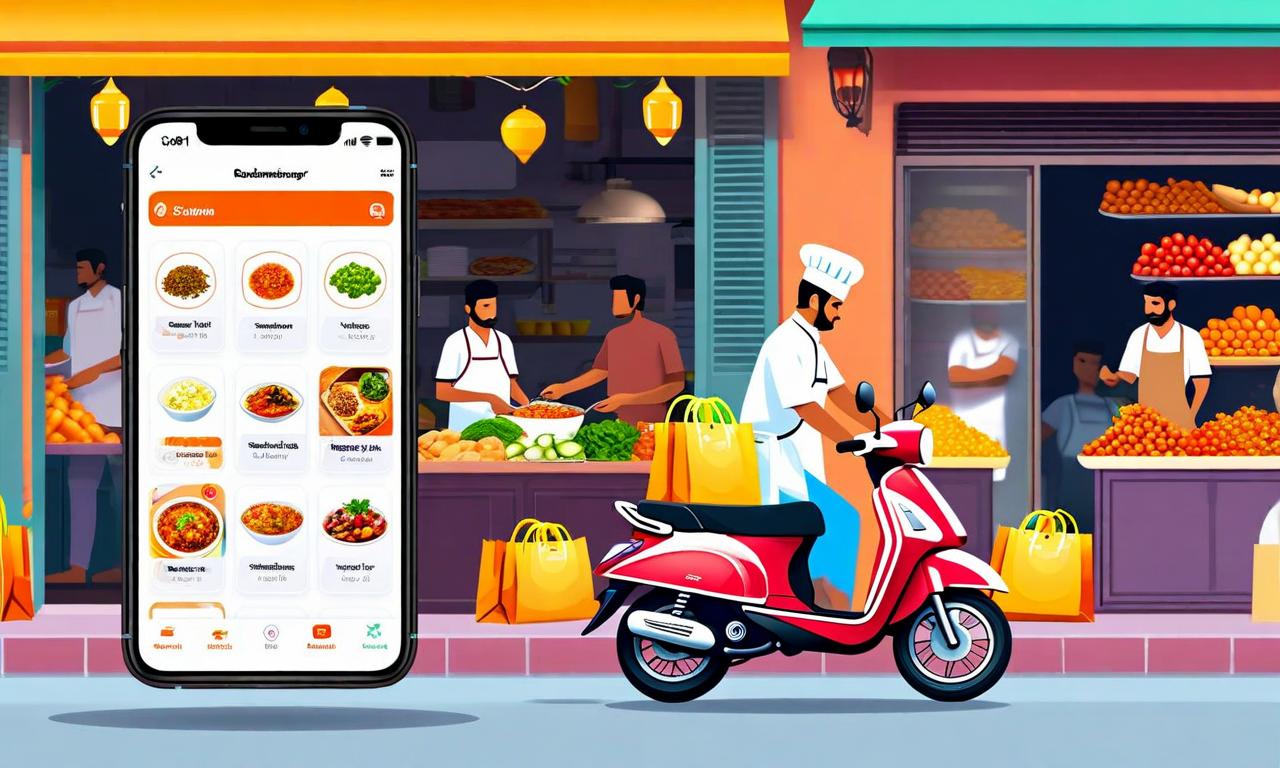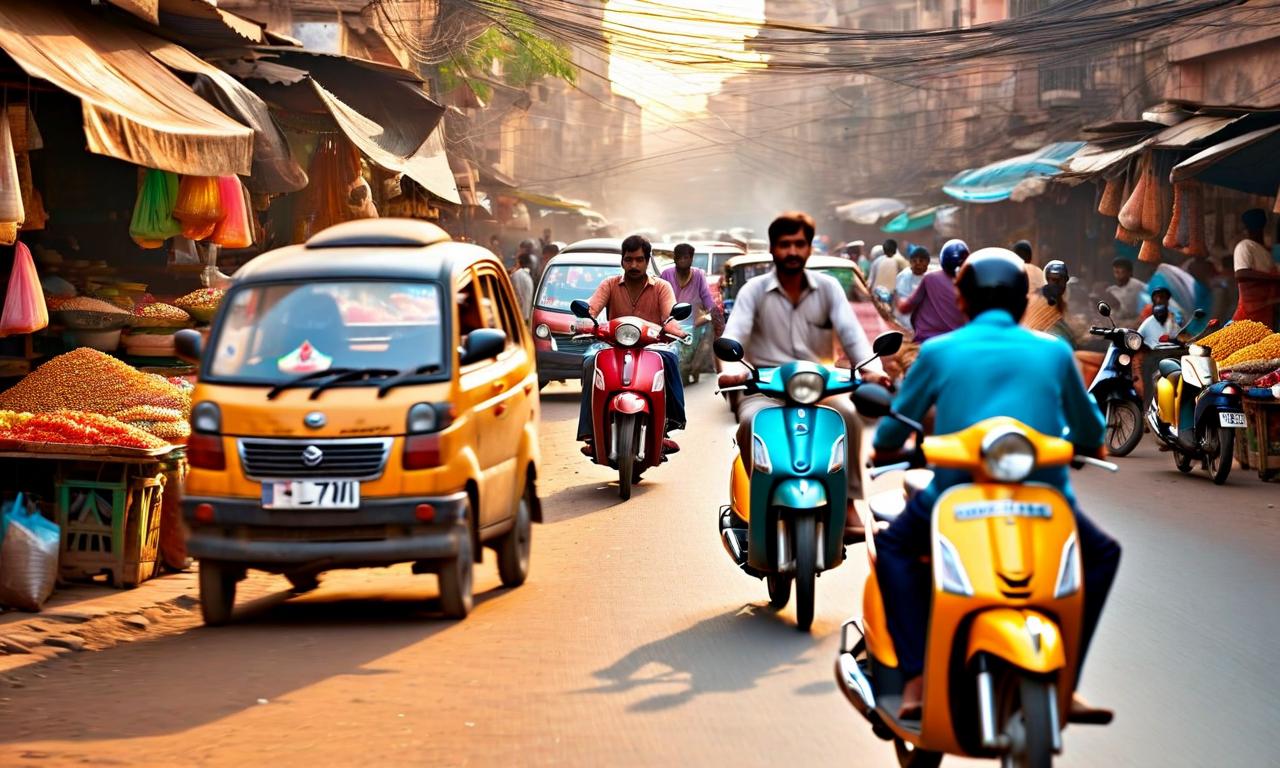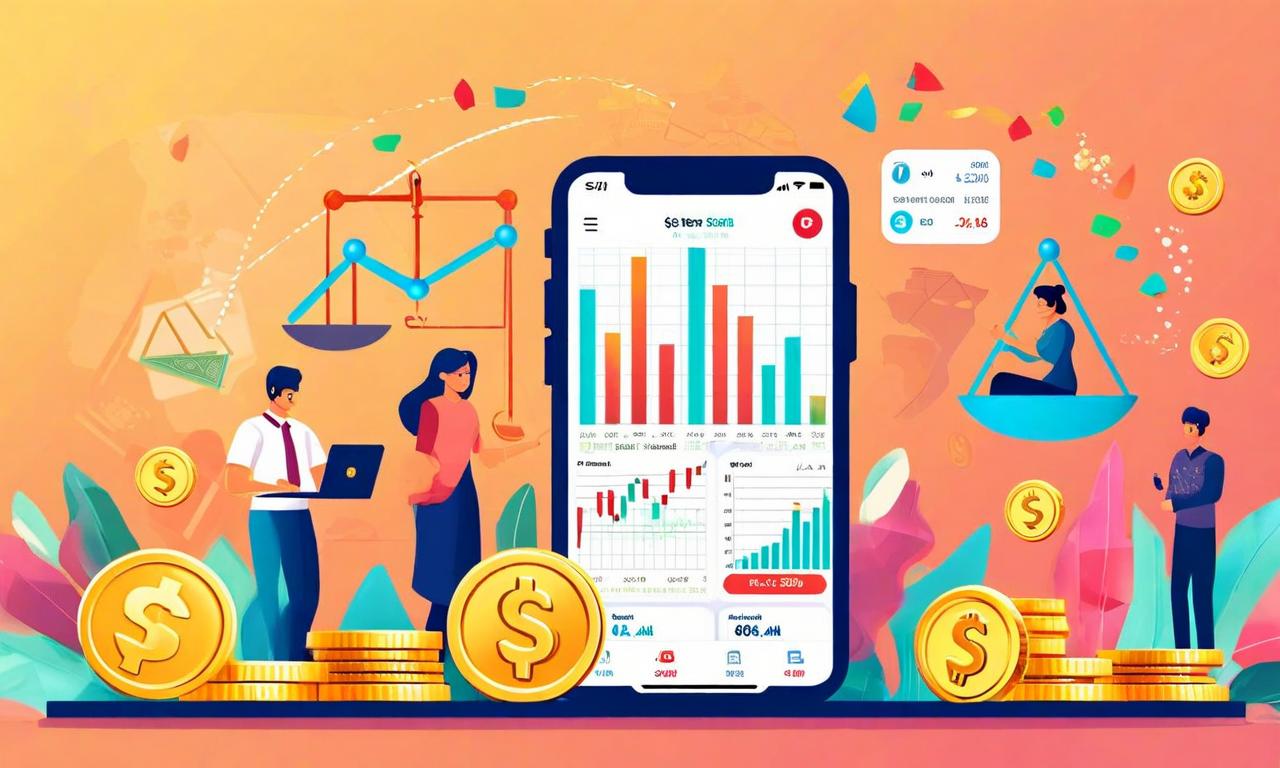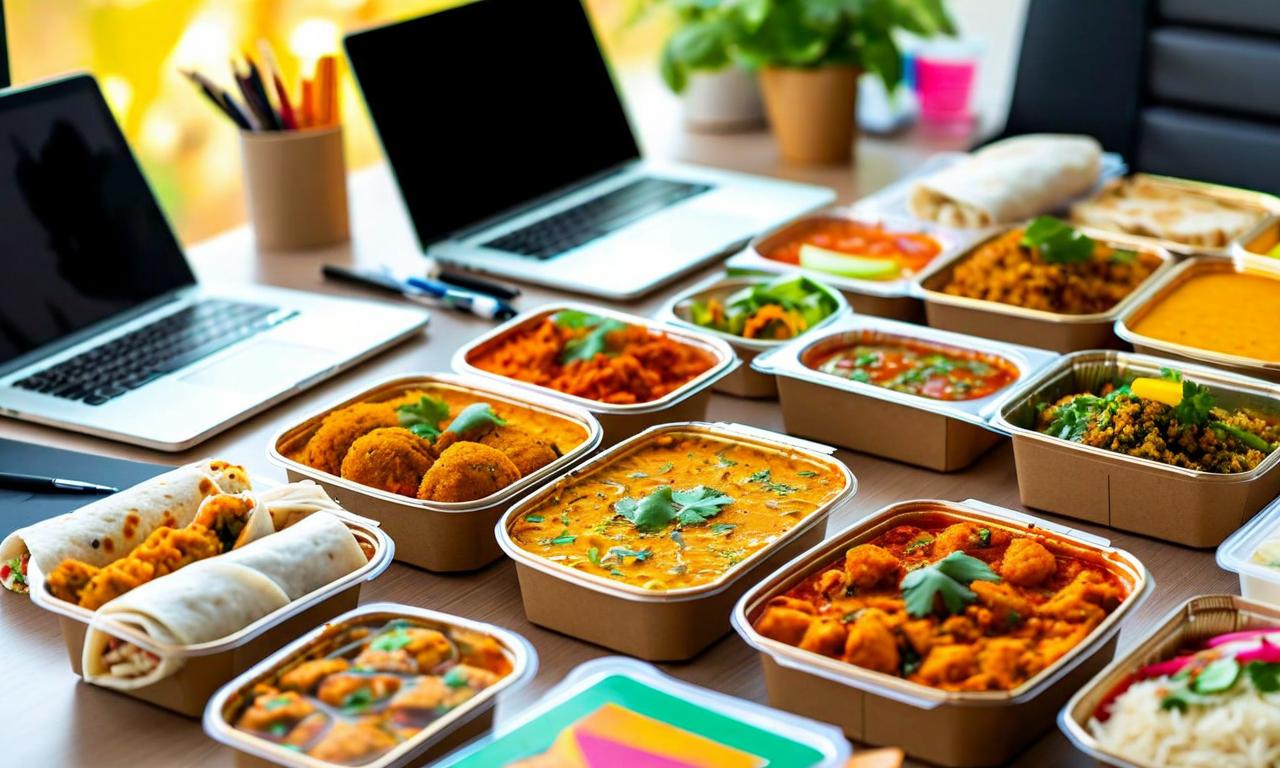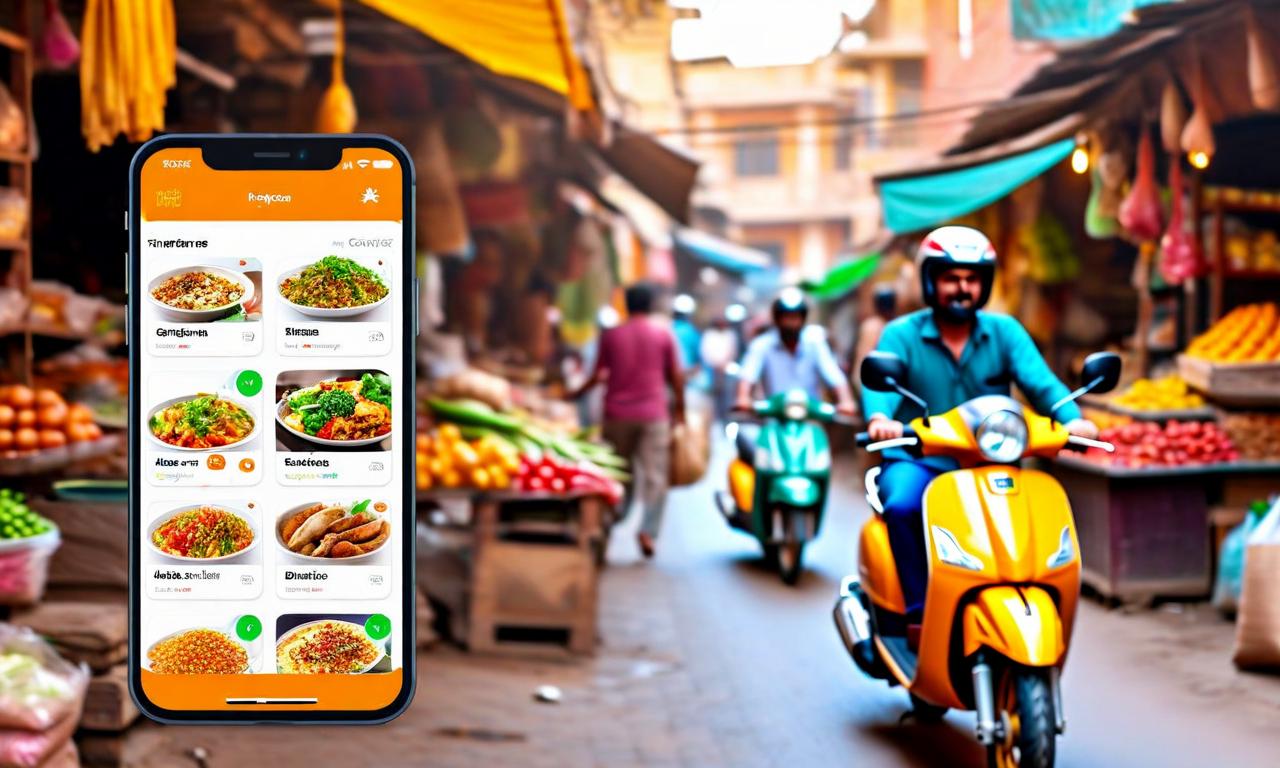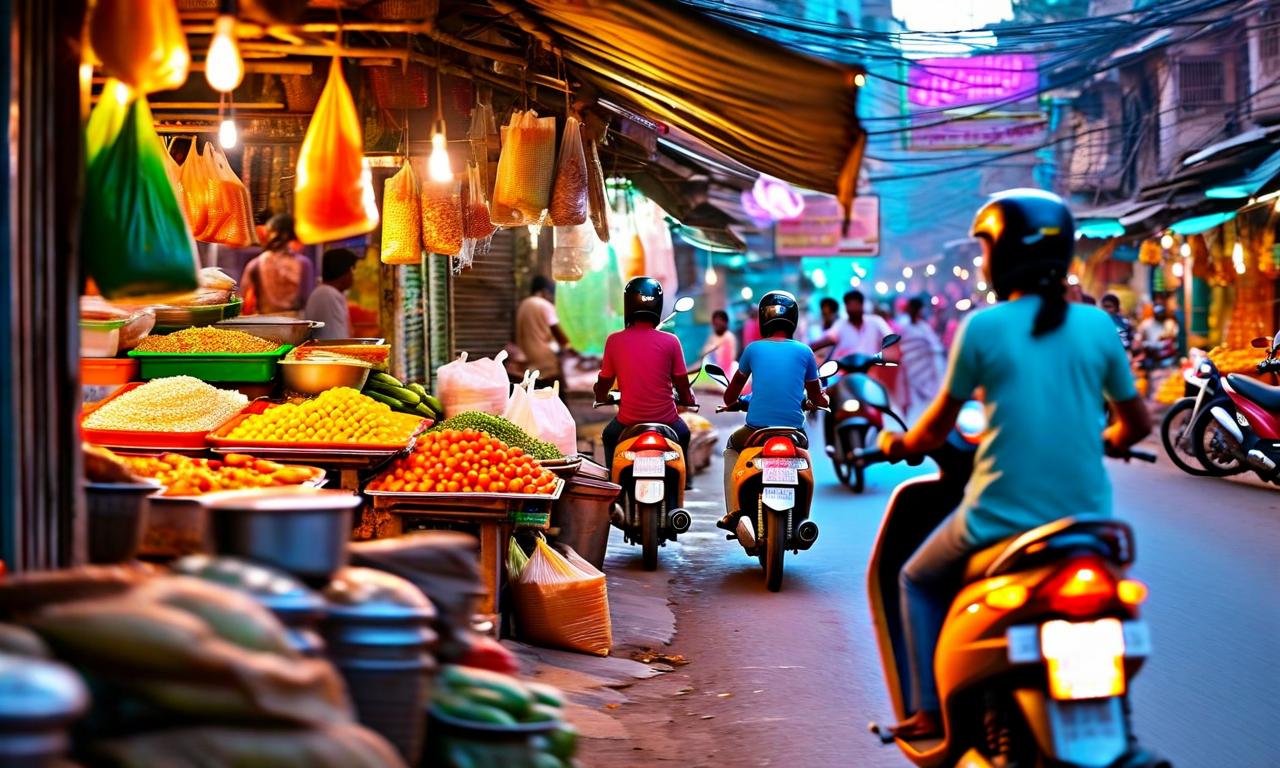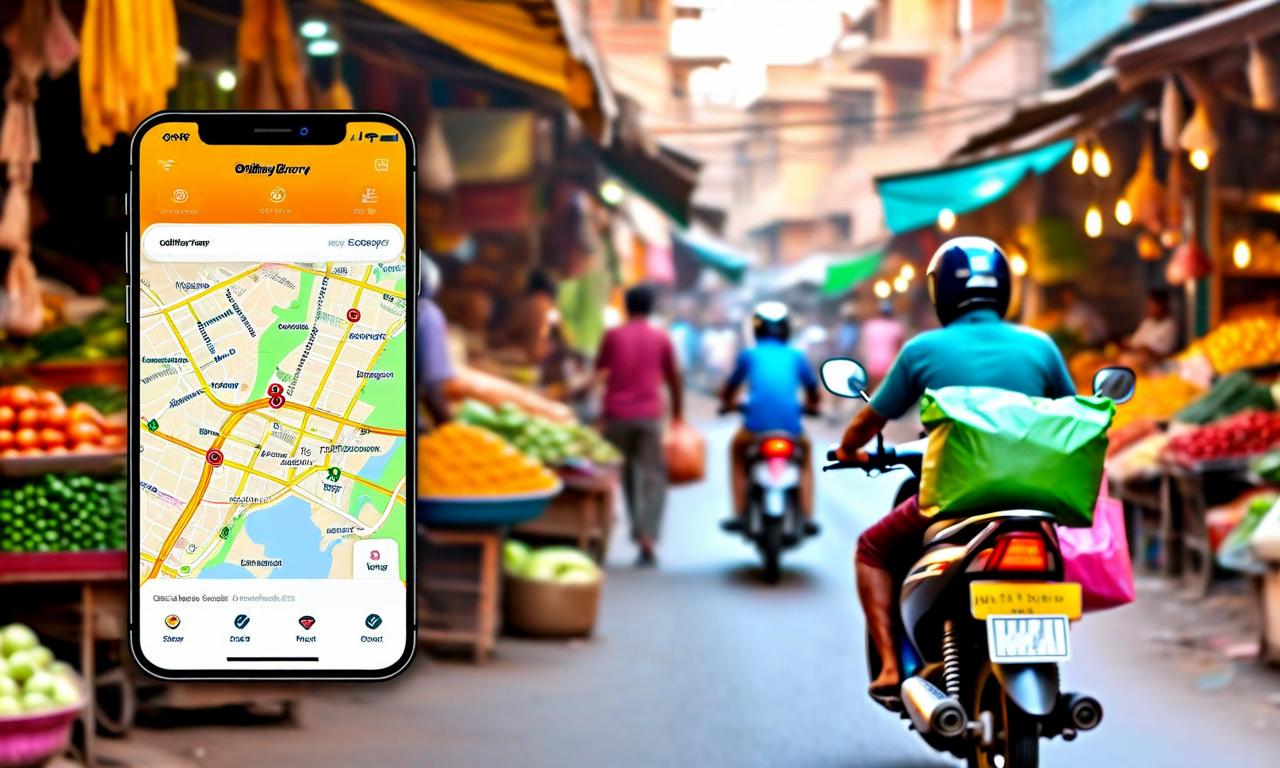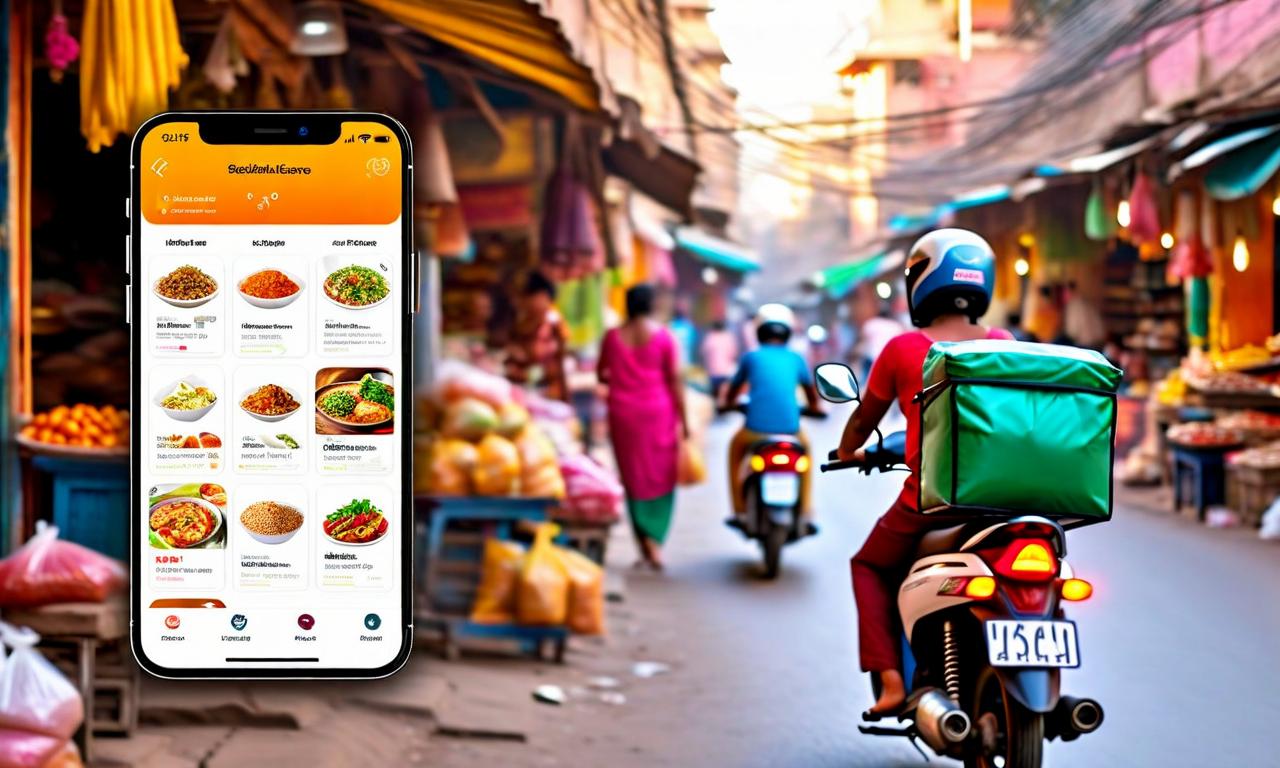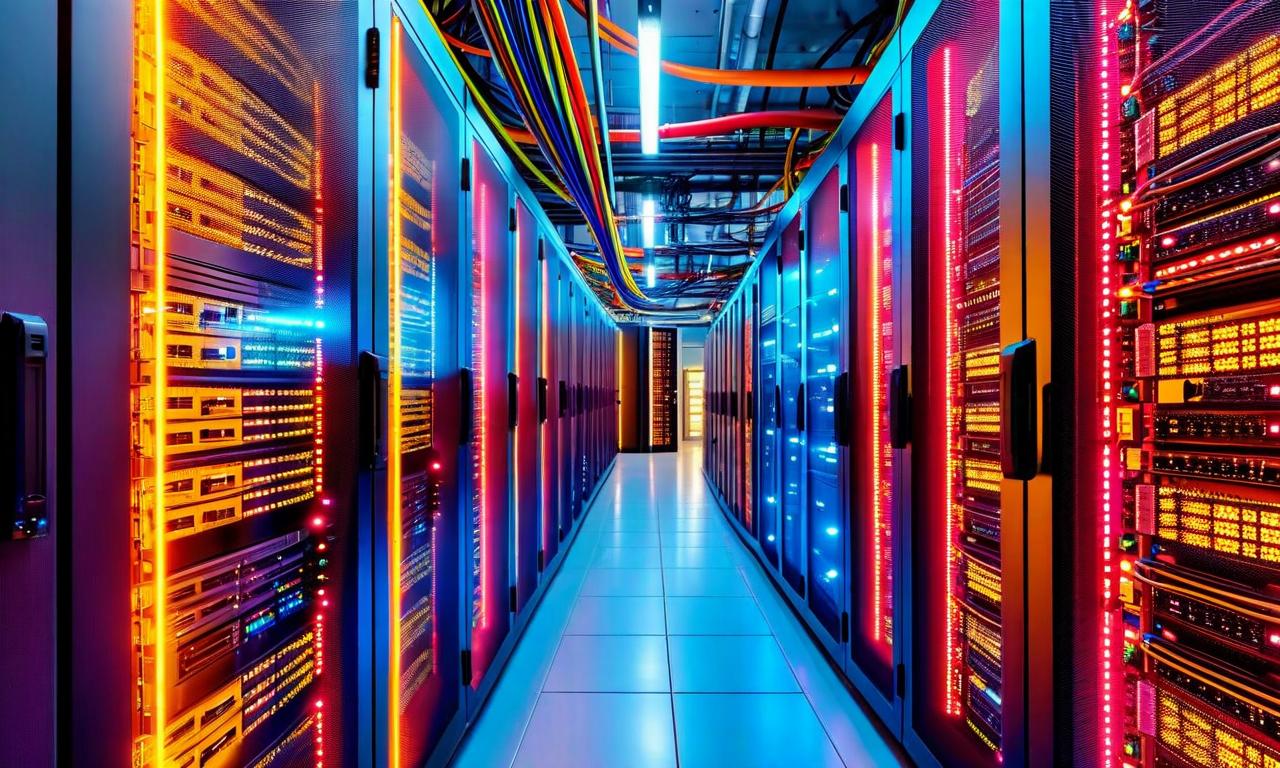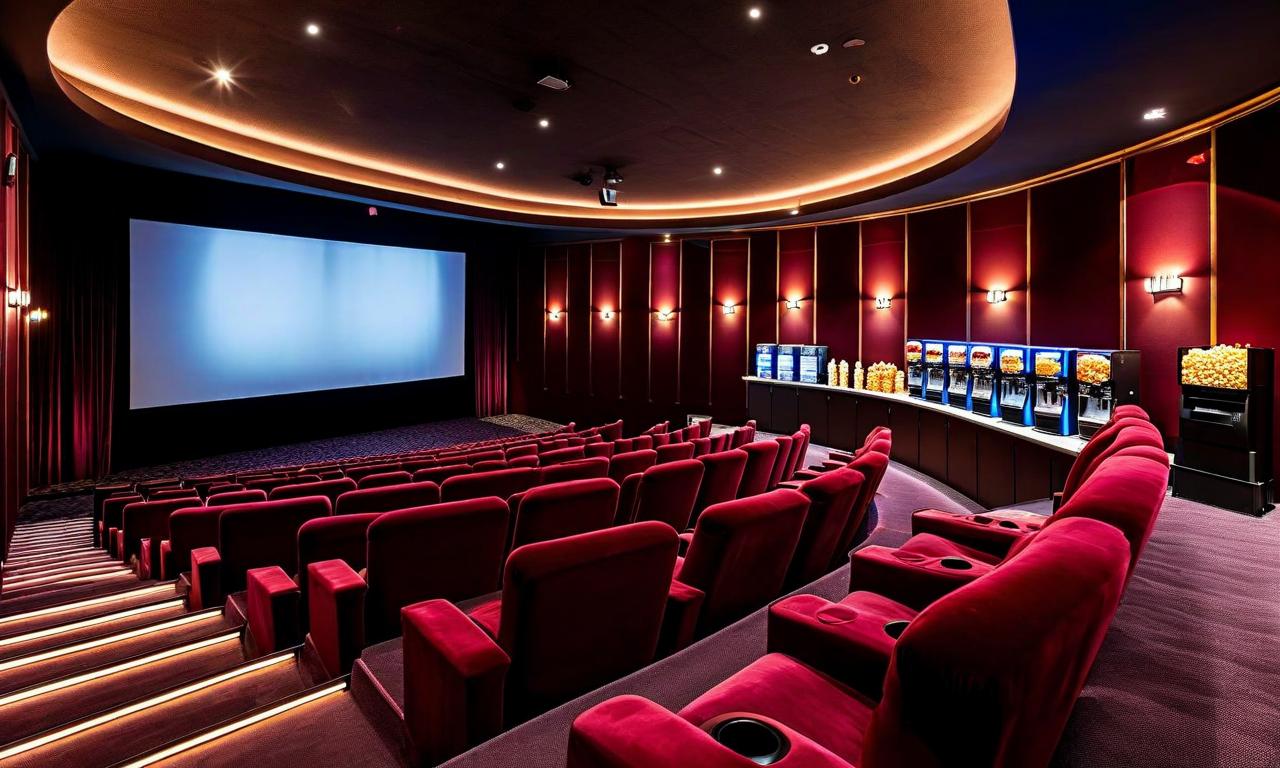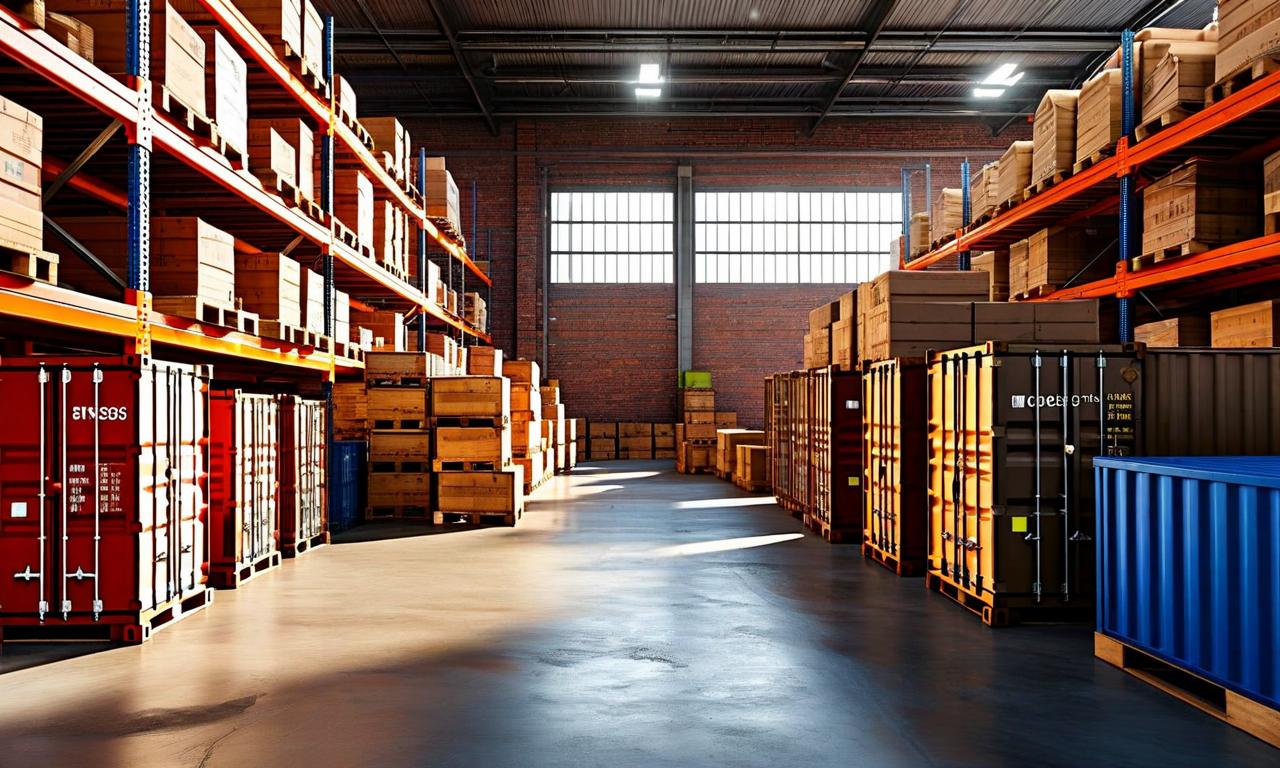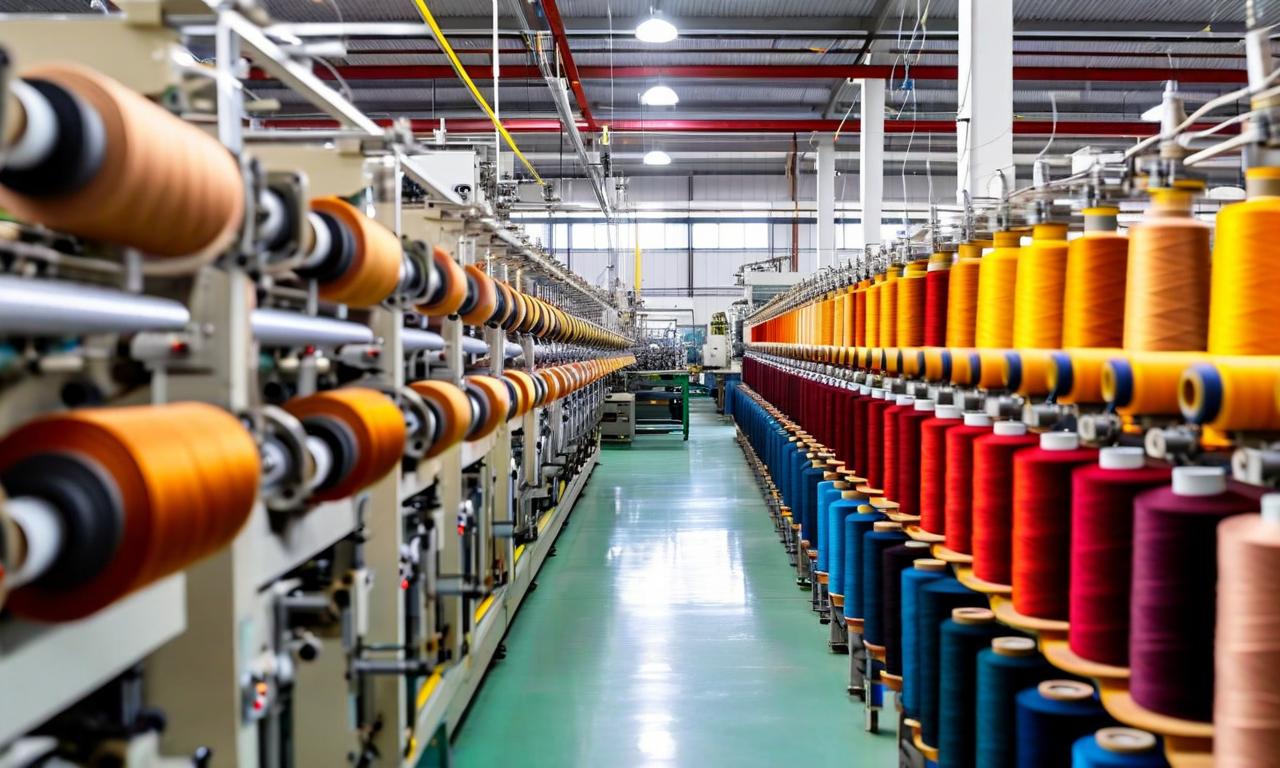Swiggy Targets 100 Million Consumers with 15+ Monthly Orders, Amazon Launches Ultra-Fast Delivery in India
Swiggy aims to serve 100 million consumers with 15 monthly orders within a decade. Instamart, Swiggy's quick commerce division, has expanded to 125+ cities, offering 35,000+ products including non-grocery items. Amazon has introduced a 10-minute delivery service in Mumbai, Delhi, and Bengaluru, entering the ultra-fast commerce sector in India.
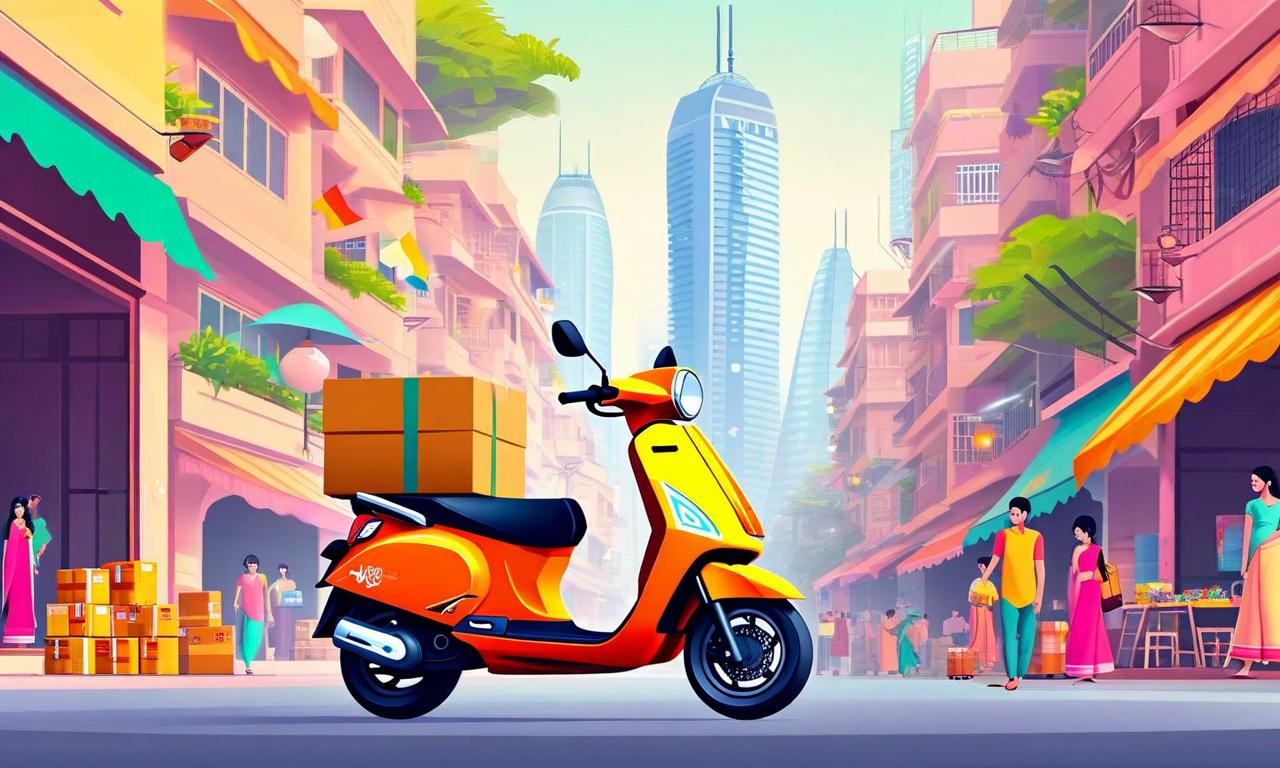
*this image is generated using AI for illustrative purposes only.
Swiggy has set an ambitious target to serve 100 million consumers who place at least 15 orders monthly within the next decade. This goal was revealed by Co-founder and CGO Phani Kishan, who also emphasized the company's focus on India after previously evaluating international expansion opportunities.
Instamart's Growth and Diversification
Instamart, Swiggy's quick commerce division, has shown remarkable growth, expanding to over 125 cities in just five years. The service now offers more than 35,000 products, including:
- Smartphones
- Beauty products
- Gold
Non-grocery products have seen significant traction, now representing 18.00% of Instamart's business, up from 7.00% previously. Importantly, the division's contribution margins have turned positive.
Kishan highlighted the vast potential in the grocery and quick commerce markets, noting that they are 10-15 times larger than food delivery. He cited India's $1 trillion retail commerce market as a significant growth opportunity for the company.
New Service Experiments
Swiggy is also experimenting with new services to diversify its offerings:
- Bolt for fast food delivery
- Dineout for restaurant bookings
- Crew, an AI-enabled concierge service for various tasks
Amazon's Ultra-Fast Delivery Service
In a parallel development, Amazon has introduced a groundbreaking 10-minute delivery service in three major metropolitan areas in India. This ultra-fast delivery option is now available to customers in Mumbai, Delhi, and Bengaluru, marking Amazon's entry into the rapidly evolving quick commerce sector in India.
Expansion into Ultra-Fast Commerce
Amazon's new 10-minute delivery service represents a strategic expansion into the ultra-fast commerce space, a segment that has been gaining traction in India's competitive e-commerce landscape. By offering this expedited delivery option, Amazon aims to cater to the growing demand for near-instant gratification among urban consumers.
Key Markets Targeted
The initial rollout of this service in Mumbai, Delhi, and Bengaluru is noteworthy. These cities are not only among India's largest metropolitan areas but also key economic hubs with a significant concentration of tech-savvy consumers who value convenience and speed.
Implications for the Indian E-commerce Landscape
This move by Amazon could potentially reshape the dynamics of the e-commerce and quick commerce sectors in India. It puts pressure on both established e-commerce players and emerging quick commerce startups to innovate and improve their delivery times to remain competitive.
Logistical Challenges and Opportunities
Implementing a 10-minute delivery service in bustling Indian cities presents both challenges and opportunities. It requires:
- A robust network of hyperlocal fulfillment centers
- Efficient inventory management
- A well-coordinated delivery fleet
Amazon's ability to execute this service effectively could set new benchmarks in the industry.
Consumer Benefits and Expectations
For consumers in these cities, this service promises a new level of convenience. It could be particularly appealing for:
- Urgent needs
- Impulse purchases
- Last-minute requirements
However, it also raises questions about the sustainability of such rapid delivery models and their impact on consumer expectations in the long run.
As Amazon rolls out this ultra-fast delivery service, it will be interesting to observe how it influences consumer behavior, impacts local businesses, and shapes the future of e-commerce in India's dynamic and growing market.
Historical Stock Returns for Swiggy
| 1 Day | 5 Days | 1 Month | 6 Months | 1 Year | 5 Years |
|---|---|---|---|---|---|
| +2.95% | +2.37% | +4.41% | +12.40% | -28.86% | -9.93% |
